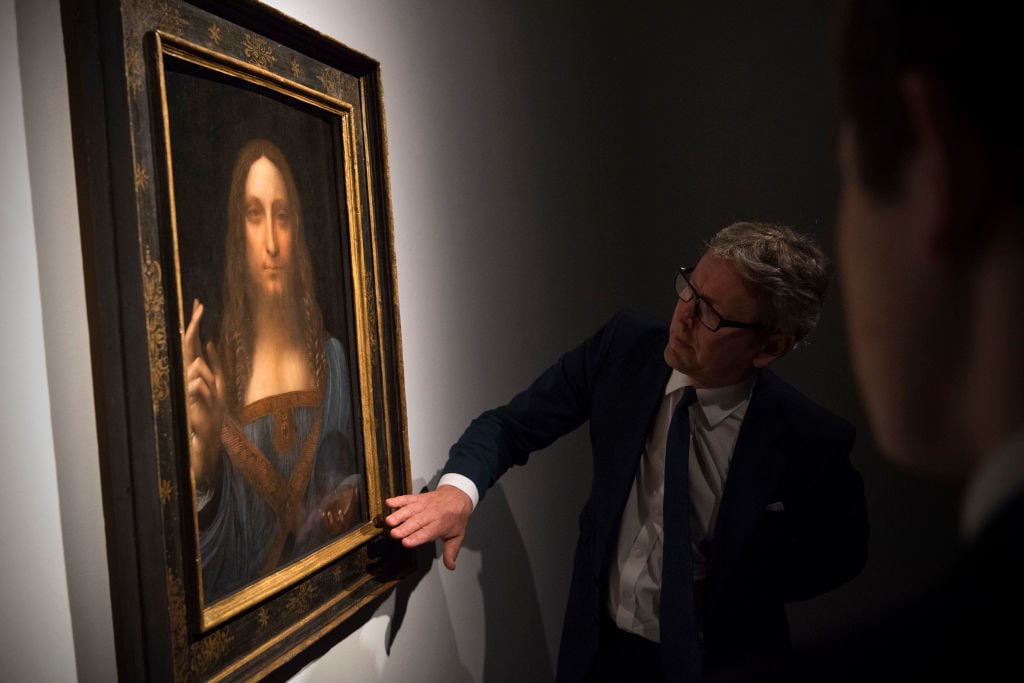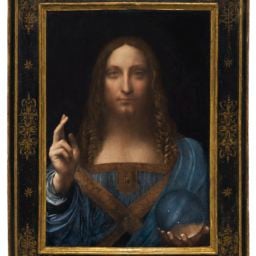Art Industry News is a daily digest of the most consequential developments coming out of the art world and art market. Here’s what you need to know this Friday, November 23.
NEED-TO-READ
Louvre Abu Dhabi Construction Firm Goes Bust – The Austrian steel engineering company behind Jean Nouvel’s enormous desert dome is struggling following Abu Dhabi’s delay in paying for the job, which saw cost go through the roof. The dome was due to cost €80 million ($90.8 million) in the $1 billion project. Waagner-Biro declared the insolvency of several of its subsidiaries last month and is selling them off to keep parts of the business afloat. (The Art Newspaper)
Concerns Grow Over the Condition of Salvator Mundi – The $450 million painting attributed to Leonardo da Vinci has not been seen since it was sold at Christie’s last year. Experts including its restorer, Daniela Modestini, are worried the “extremely fragile” panel might be damaged. It needs a very precise microclimate to prevent further deterioration but the auction house removed the air-impermeable protective glass before it sold the work, and Modestini is worried its unveiling at the Louvre Abu Dhabi was postponed because of its condition. Others speculate the museum, or the Louvre in Paris, could be having second thoughts about its attribution. (Times)
Why the Tower of Pisa Is Leaning Less – The famously inclined tower is leaning 1.5 inches less than it used to thanks to consolidation efforts from engineers in the late 1990s to prevent it from falling over. Experts, who did not expect it to straighten up, are welcoming the news, saying that the tower is in a “very good” state of health. At this rate of correction it would take 4,000 years for the landmark in Pisa to be completely vertical. (New York Times)
ART MARKET
Why Christie’s-Sotheby’s Duopoly Is Here to Stay – A former director at Bonhams, Martin Gammon, writes that it is nearly impossible for smaller auction houses to encroach on Christie’s and Sotheby’s market share. They sell more than 80 percent of works over $1 million and have a duopoly on consignments in the big-ticket Impressionist, Modern, post-war and contemporary markets. It is all down to escalating buyer’s premiums, which allow them to slash their seller’s commission, Gammon writes. (TAN)
Outcry Stops Bonhams’s Rhino-Horn Auction – Bonhams Hong Kong cancelled a planned sale of rhinoceros carvings and has committed to never selling objects made with rhino horn again after 37 wildlife conservation organizations wrote to the stop the sale of items from the Angela Chua Collection and some 10,000 people signed a petition. Now the environmentalists are calling on Sotheby’s to follow suit. (South China Morning Post)
COMINGS & GOINGS
US University Returns Looted Mosaics to Turkey – Fragments of a Roman mosaic purchased in the 1960s by Bowling Green State University in Ohio are heading back to Turkey. The university hired archaeologists who traced the 12 pieces back to a looted villa in Zeugma. They were sold by the New York-based dealer Peter Marks, who died in 2010. (Times)
Anne Frank Museum Unveils Major Revamp – The Dutch King Willem-Alexander has reopened the Amsterdam museum in the house where Anne Frank and other Jews hid from the Nazis. The museum has completed a two-year revamp during which the secret annex remained unchanged. Visitors can see the teenager’s actual diary as well as experience a VR tour of the annex that shows how eight people lived in the cramped space. (Reuters)
The Verbier Art Summit’s Topical Program Announced – The third edition of the two-day summit will feature the artists Tania Bruguera, Rirkrit Tiravanija, and Ernesto Neto as well as the Tate’s director Maria Balshaw. Jochen Volz, the director of the Pinacoteca de São Paulo, Brazil, who has helped organize the event set to take place in early February says art can challenge binary thinking in a divided world, citing “Brexit, the recent elections in Brazil and the political shifts in the US.” (Press release)
FOR ART’S SAKE
Chinese Archaeologists Discover a Mini Terracotta Army – Hundreds of small statues depicting infantrymen, cavalry, and performers have been discovered in China. Archaeologists unearthed the mini Terracotta Army in a 2,100-year-old pit. They think the 55-inch-high statuettes made a century after the full-sized army may guard the lost tomb of Qi prince, Liu Hong. (Mail Online)
Did an $890,000 Sculpture Lead to the Downfall of Nissan’s Boss? – A sculpture by the Beirut-based artist Nadim Karam, which was commissioned by automaker Nissan’s chairman, has been implicated in his downfall. Japanese media reports that The Wheels of Innovation, which Carlos Ghosn unveiled in June 2017 in Nissan’s headquarters in Yokohama, Japan, cost around $890,000. Ghosn, who was arrested on November 19, faces allegations of financial misconduct. (Ahshi)
Daniel Birnbaum Writes a Spy Thriller – The outgoing director of the Moderna Museet in Stockholm has written a spy thriller based on a true story. Called Dr. B., Daniel Birnbaum’s first work of fiction is inspired by his grandfather’s bravery in 1940s Stockholm, where he helped aid British spies to spread propaganda in Nazi Germany. It’s published in Swedish by Bonnier, where his grandfather, Immanuel Birnbaum, had worked during the war. Translations in English and French are in the pipeline. (Instagram)









